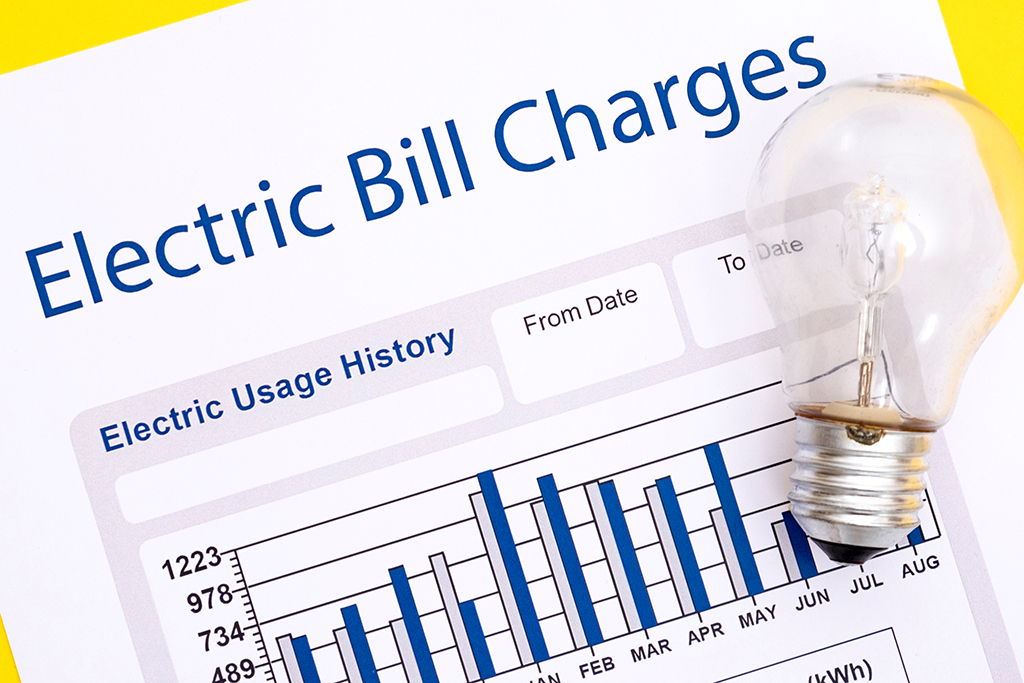When it comes to electricity bills, nothing is better than seeing a low number. Maintaining that low number, however, can be a challenge without the right tools and information. In this article, we’ll explore six things that are increasing the electricity usage (and electricity bills) at your company, facility, or organization, and how you can control them.
Next, we’ll explain how you can easily monitor and manage your electricity usage throughout your building or portfolio. Tracking and monitoring electricity usage allows you to see spikes in electricity usage and correct them before they translate to higher numbers on your electricity bills. Additionally, you can’t manage what you can’t measure. Once you are monitoring your electricity usage, you can begin identifying ways to cut your usage, thus lowering your emissions and benefitting both Mother Earth and your company’s bottom line.
Six Things That Are Increasing Your Electricity Usage
1. Phantom loads, aka plug loads
Plug loads are appliances and electronics that stay plugged in all the time, like computers, televisions, and appliances. Even plugs that are not connected to anything still draw energy! Plug loads are small drains of electricity that add up over time, especially if you have a lot of them. Luckily, they’re easy to solve. Just unplug any devices or cords when you’re not using them.
2. Inefficient lightbulbs
If you’re currently using incandescent lightbulbs or CFLs in your buildings, be aware that they emit light and heat in all directions, which can waste a lot of energy. Switch to LED bulbs, which are much more efficient because they emit light in a specific direction. LEDs use 75% less energy than traditional bulbs and last 25 times longer. For added efficiency in your lighting, look for ENERGY STAR-certified LED lights. These bulbs have been thoroughly tested and adhere to ENERGY STAR’s strict conservation requirements.
3. Air leaks
It’s not uncommon to feel cold, air-conditioned air seeping out of buildings on hot days, or feel cold draughts inside on chilly days. These air leaks can add up significantly on your electricity bills. If you are located in an extreme climate or experience severe degree days, your HVAC system is using a lot of energy to keep your building(s) at a desired temperature, and air leaks are essentially wasting that energy.
To combat air leaks, you can manually check the exterior frames of doors and windows to see if they need new caulking or refitting. You can also use thermal imaging scanners to determine areas that are leaking air.
4. Using energy during peak load times
You may pay more for electricity during the most popular energy use times, aka peak load times. The coronavirus pandemic has disrupted the traditional peak load times which revolved around the 9-5 workday. Luckily, an energy management software can help you predict when these peak load times will occur (see below).
Knowing this, you can strategically limit your use of energy during these peak times or plan to use stored energy rather than relying on energy from the grid when it is peaking.
5. Changes in usage patterns
With summer approaching, air conditioners will likely be running more often in your buildings, leading to an increase in electricity usage. Additionally, with people returning to office buildings, government facilities, and schools as COVID-19 vaccine rollout continues, electricity usage is primed for a spike.
You can use real-time and interval data monitoring to keep an eye on the electricity usage in your building(s). If there is an unusual spike, check for inefficiencies.
6. Rising electricity rates
Another reason your bill may be higher is because electricity is becoming gradually more expensive. Energy costs have risen consistently year over year, so your rates increase to match. According to the U.S. Energy Information Administration (EIA), electricity prices are expected to rise steadily through 2022 in all three sectors (residential, commercial, and industrial).
You can combat rising electricity rates and increase price predictability by generating your own electricity via distributed energy resources or participating in a green tariff program.
How EnergyWatch Can Help You Monitor and Manage Your Electricity Usage
EnergyWatch’s energy and sustainability management software, WatchWire, can help you effectively monitor your electricity usage. Not only can WatchWire provide you with real-time data and interval monitoring (as mentioned above), it can assist you with preparing energy budgets, predicting when peak load times will occur, measure your water and energy use, help you measure and verify the effectiveness of your efficiency projects, and benchmark your efforts against national efficiency standards like WELL Building and ENERGY STAR. To learn more about WatchWire’s capabilities, download the WatchWire Fact Sheet.
 Top Sustainability Trends to Watch in 2025
Top Sustainability Trends to Watch in 2025

 Log In
Log In








